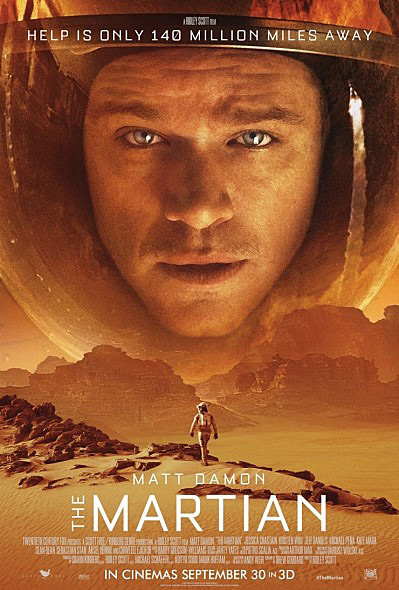주메뉴
- About IBS 연구원소개
-
Research Centers
연구단소개
- Research Outcomes
- Mathematics
- Physics
- Center for Underground Physics
- Center for Theoretical Physics of the Universe (Particle Theory and Cosmology Group)
- Center for Theoretical Physics of the Universe (Cosmology, Gravity and Astroparticle Physics Group)
- Dark Matter Axion Group
- Center for Artificial Low Dimensional Electronic Systems
- Center for Quantum Nanoscience
- Center for Exotic Nuclear Studies
- Center for Van der Waals Quantum Solids
- Center for Relativistic Laser Science
- Chemistry
- Life Sciences
- Earth Science
- Interdisciplinary
- Center for Neuroscience Imaging Research (Neuro Technology Group)
- Center for Neuroscience Imaging Research (Cognitive and Computational Neuroscience Group)
- Center for Algorithmic and Robotized Synthesis
- Center for Nanomedicine
- Center for Biomolecular and Cellular Structure
- Center for 2D Quantum Heterostructures
- Institutes
- Korea Virus Research Institute
- News Center 뉴스 센터
- Career 인재초빙
- Living in Korea IBS School-UST
- IBS School 윤리경영


주메뉴
- About IBS
-
Research Centers
- Research Outcomes
- Mathematics
- Physics
- Center for Underground Physics
- Center for Theoretical Physics of the Universe (Particle Theory and Cosmology Group)
- Center for Theoretical Physics of the Universe (Cosmology, Gravity and Astroparticle Physics Group)
- Dark Matter Axion Group
- Center for Artificial Low Dimensional Electronic Systems
- Center for Quantum Nanoscience
- Center for Exotic Nuclear Studies
- Center for Van der Waals Quantum Solids
- Center for Relativistic Laser Science
- Chemistry
- Life Sciences
- Earth Science
- Interdisciplinary
- Center for Neuroscience Imaging Research (Neuro Technology Group)
- Center for Neuroscience Imaging Research (Cognitive and Computational Neuroscience Group)
- Center for Algorithmic and Robotized Synthesis
- Center for Nanomedicine
- Center for Biomolecular and Cellular Structure
- Center for 2D Quantum Heterostructures
- Institutes
- Korea Virus Research Institute
- News Center
- Career
- Living in Korea
- IBS School
News Center
|
Scientists talk science in movies The Martian (2015), Never stop fighting. Survive by focusing on challenges at present. - Science Movie recommended by SONG Ha-Young, a researcher from the Center for Self-Assembly and Complexity. -
“I am left stranded alone on Mars. I survived through an unexpected dust storm only to find out that other crew members left for Earth without me. They presumed my death so gave up on me. I have to let them know I am still alive. And I need to stay alive right here on Mars by making the most of what I have until their return.” The movie Interstellar drew the public’s attention to astrophysics in 2014 and then, last year, a film about surviving on Mars stimulated people’s scientific curiosity. The audience was touched by the main character, Mark Watney’s efforts to survive by making the most of his scientific knowledge. The film is based on Andy Weir’s novel The Martian which was highly praised for its scientific accuracy. Matt Damon, who has previously portrayed survivor characters, plays Mark and the greatness of the book was successfully adapted into the movie. Therefore, audiences will be immersed in the movie to see whether or not Mark can make it to back to Earth. Researcher SONG envies Mark’s scientific wit and boldnessAt the IBS Center for Self-Assembly and Complexity in POSTECH, researcher SONG Ha-Young highly praised Mark’s scientific wit and ability of application. He said the best scene was when Mark made water using Hydrazine in order to grow potatoes. Hydrazine is a liquid chemical compound used in various rocket fuels and its chemical formula is N2H4 (N: Nitrogen, H: Hydrogen). In the film, Mark disconnected the hydrogen-nitrogen bond by dropping hydrazine onto catalyst iridium, a transition metal and produced water by burning decomposed hydrogen. “I got to know that what Mark did is actually the same as how rocket fuels work and it’s very dangerous. It can cause an explosion and a fire and hydrazine that he used in the movie, is highly toxic so it can poison you to death. However, what’s really surprising is that he took such risks,” he said. SONG said that what Mark did to overcome freezing nights on Mars was also impressive. He retrieved a plutonium power cell that the mission buried as soon as they touched down on Mars, covered it with gold foil and put it in the rover, a space exploration vehicle. And he overcame chilly nights with the heat produced from the cell. SONG said he would never take such risks for fear of radiation exposure. “I sometimes use radioactive materials for my experiment so I have been educated how to handle them properly. Thinking of the instruction, I was really worried about the way Mark used the materials. And I think my timidity would not allow me to survive on Mars,” he said, laughing. SONG added that if he had a chance to meet Mark, his first question would be about Mark’s health. That’s because SONG believes Mark must have a health issue since he was exposed to highly toxic hydrazine and radioactive for a long time.
He also said that the scene where Mark contacted Earth using Pathfinder was also fascinating. First, Mark dug up an unmanned probe ‘Mars Pathfinder”. Then he sent yes/ no messages to Earth using the probe. He further developed this method into a hexadecimal system based on the ASCII table so that he could freely communicate with Earth and even make jokes. This communications system helped NASA form a plan to rescue Mark. Surviving on Mars is similar to real-life scientific research.
SONG is studying Carbene at the lab under research fellow LEE Eun-Sung. Unlike other carbon molecules, carbene is an unstable carbon-based chemical with only two bonds and its nature changes depending on surroundings. It also exhibits characteristics of metal if there are changes in its structure or environment. SONG participated in the study of N-Heterocyclic Carbene Nitric Oxide Radicals which was published in JACS last year. SONG explained that Mark’s survival methods were very close to those of real scientific research. In the movie, Mark solved problems ahead of him one by one and that is similar to how SONG deals with difficulties in his research. He said, “When you do your best to address issues at present, in the end, it will take you where you want to go. To be sure, it is important to make a long term plan but it is also true that focusing on immediate challenges and addressing them step by step makes you become an expert.” He said his research philosophy was set when he entered graduate school. Based on this philosophy, he will satisfy his curiosity about his current research on molecular design. “It is fun for me to design and compose molecules with unknown characteristics. For that reason, carbene is interesting. Even small changes can lead to big transformations in carbene’s nature. I want to do research to make carbene into a cheaper and eco-friendly catalyst compared to heavy metal ones.” SONG enjoys science movies that ignite imagination and curiosity.Science films like The Martian can stimulate the public’s imagination and inspire dreams. On the other hand, such films also can cause controversy when they contain scientific errors. However, SONG said errors in science movies could draw more attention from the public. “I believe that film-makers should check key parts of the movie thoroughly but at the same time they should give up some scientific accuracy for dramatic effect. When the audience talks about the movie and searches for scientific principles, they can nurture scientific knowledge. It would be more fun to leave some controversial parts on purpose,” he said. SONG used to read science magazines and comics when he was a child and still loves reading science books. He said his childhood interest in science has made him the scientist he is today. Therefore, he is deeply interested in helping people pay more attention to science. He added that thanks to various science books that are newly published or have been given new life through famous podcasts or film adaptations, scientific curiosity of the public has been sparked recently. Lastly, SONG strongly recommended reading the novel The Martian. That’s because the book explains some incomprehensible scientific phenomena in the movie so that readers can better understand how Mark survived through extreme circumstances and that will inspire not only scientists but the general public. The researcher once again mentioned he really envies Mark’s scientific wit and bold determination. We expect SONG to be an adventurous and creative scientist just like Mark Watney. The Martian (2015)
Director: Ridley Scott Cast: Matt Damon, Jessica Chastain, Michael Pena, Sebastian Stan Plot: Never stop fighting! I’ll return to Earth no matter what! |
| before |
|---|
- Content Manager
- Communications Team : Kwon Ye Seul 042-878-8237
- Last Update 2023-11-28 14:20















